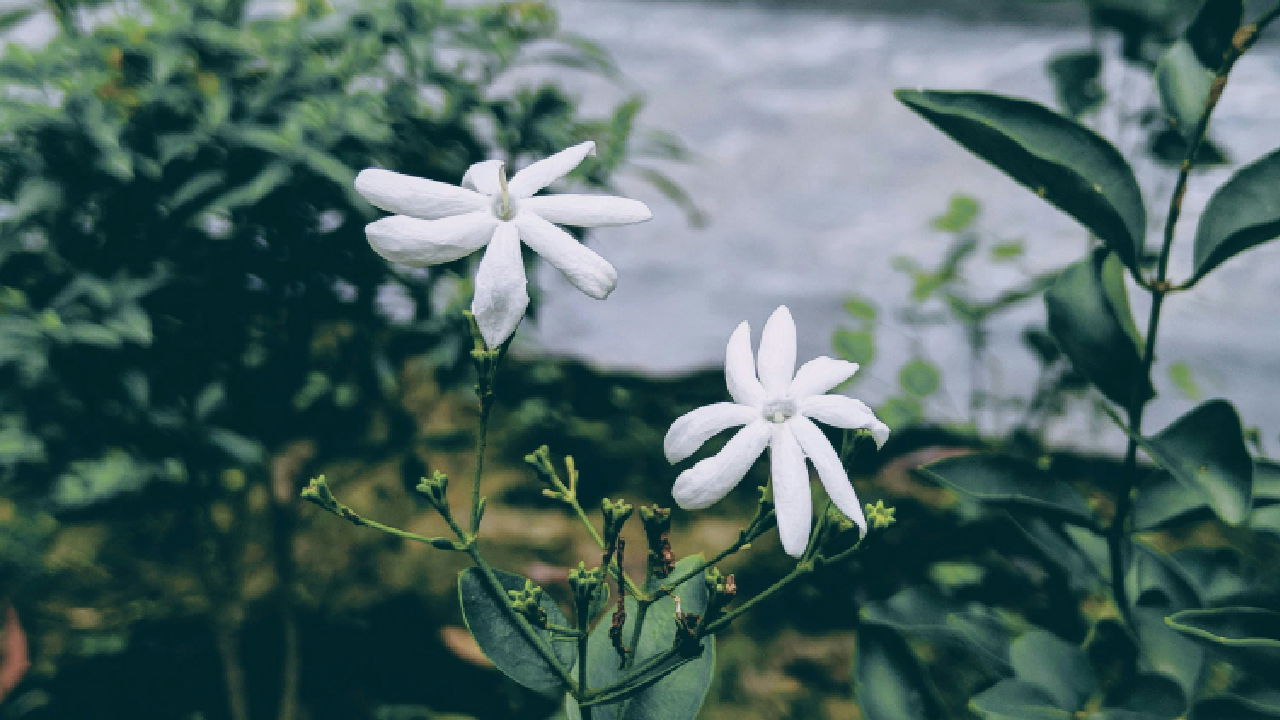
Jasmine, belonging to the Oleaceae family, is renowned for its exquisite fragrance and delicate flowers. This genus encompasses over 200 species, with the most popular being Jasminum sambac (Arabian jasmine), Jasminum grandiflorum (Spanish jasmine), and Jasminum auriculatum (common jasmine). Native to tropical and subtropical regions, jasmine is cultivated worldwide for ornamental, medicinal, and aromatic purposes. Its flowers are not only prized in gardens and landscapes but also widely used in perfumes, teas, and traditional medicines. Jasmine's cultivation requires specific conditions, including well-drained soil and ample sunlight, making it an attractive option for both commercial growers and home gardeners. The cultural significance of jasmine varies globally, symbolizing love, purity, and beauty in many traditions, further enhancing its appeal.
Importance of Jasmine
-
Economic Value: The demand for jasmine flowers in the perfume industry, cosmetics, and aromatherapy contributes significantly to local economies.
-
Culinary Uses: Jasmine flowers, especially those of Jasminum sambac, are used in culinary applications, particularly in teas and desserts.
-
Medicinal Properties: Jasmine is known for its potential health benefits, including anti-inflammatory, antioxidant, and sedative properties.
-
Cultural Significance: It is commonly used in religious ceremonies, weddings, and festivals, enhancing its social and cultural relevance.
-
Environmental Benefits: As a flowering plant, jasmine attracts pollinators such as bees and butterflies, supporting biodiversity.
-
Ornamental Appeal: Its fragrant blooms enhance outdoor spaces, contributing to the beauty and ambiance of homes and public areas.
Cultivation Process of Jasmine
-
Soil and climate: Jasmine can be planted on a wide range of soils. Well-drained sandy loams and red loams under tropical conditions are suitable for its cultivation. In clayey soils, there is increased vegetative growth and reduced flowering.
-
Propagation Method: Jasmine can be propagated through stem cuttings or layering. For cuttings 15-20 cm long semi-hardwood cuttings are used which are rooted in the nursery before transplanting.
-
Spacing: Planting distance should be 1.5 to 2 meters between plants and planting is best done during the monsoon season to ensure adequate moisture.
-
Irrigation: Irrigation is needed regularly, especially during dry periods. Drip irrigation can be employed for efficient water usage.
-
Fertilization: Farmyard manure at 10-12 tons/ha should be used before planting. A balanced NPK (Nitrogen, Phosphorus, Potassium) mix should be applied around 100-200g per plant annually.
-
Pruning: Regular pruning helps maintain plant shape and stimulates flower production. Pruning should be done after each flowering cycle.
-
Flowering and Harvesting: Jasmine typically flowers 6-8 months after planting. Flowers should be picked early in the morning, as this is when their fragrance is at its peak.
-
Post-Harvest Handling: Flowers should be stored in cool, moist conditions to maintain freshness. Jasmine flowers are often sold to perfume manufacturers, florists, or for traditional use in garlands.
Best cultivars varieties
1. Auriculatum Varieties: Co-1, Co-2, Long Point, Long Round, Short Point, Short Round, Parimullai etc.
2. Grandiflorum Varieties: Co-1, Co-2, Thimmapuram, Lucknow etc.
3. Sambac Varieties: Gundumalli, Motia, Virupakshi, Sujimalli, Madanabanam, Ramabanam, Single Mogra, Double Mogra, Iruvatchi, Ramanathapuram local etc.
Disease Management
-
Yellowing of leaves: It is caused by 3 factors viz., iron deficiency, nematode infection and root rot disease.
-
Iron deficiency: It can be rectified by spraying Ferrous sulfate 5 g/lit at monthly intervals until the chlorotic symptoms disappear.
-
Nematode: Initially soil is tested for nematode infection. 10 g of Temik granules should be applied near the root zone and then irrigation is applied to the field.
-
Root rot: Drenching of the soil around the plant should be done with Copper oxychloride at 2.5 g/lit.
-
Leaf spot: Mancozeb at 2 g/lit. Should be spread from the onset of monsoon at monthly intervals to control the disease occurrence.
Insects pest Management
-
Bud worm: Monocrotophos 2 ml/lit should be sprayed to control the pest.
-
Blossom midge: Monocrotophos 2 ml/lit or Quinalphos 2 ml/lit should be sprayed to control it.
-
Red spider mite: Wettable Sulphur 50 WP @ 2 g/lit or Dicofol 2.5 ml/lit should be sprayed to control the mite infestation.
-
Leaf eating caterpillar: Leaf eating caterpillar can be controlled by spraying Quinalphos 2 ml/lit.
-
White ants: To control, Lindane should be dusted to the pits before planting @ 5 g/pit.
Market price of Jasmine
The price of Jasmine varies from Rs. 300- Rs. 500/kg.
(Source - ICAR -CCARI, Goa)
















